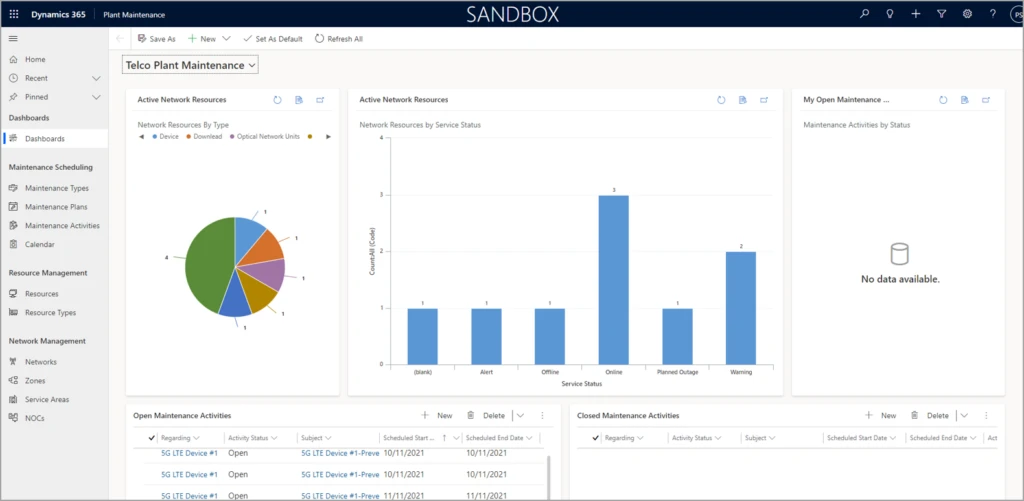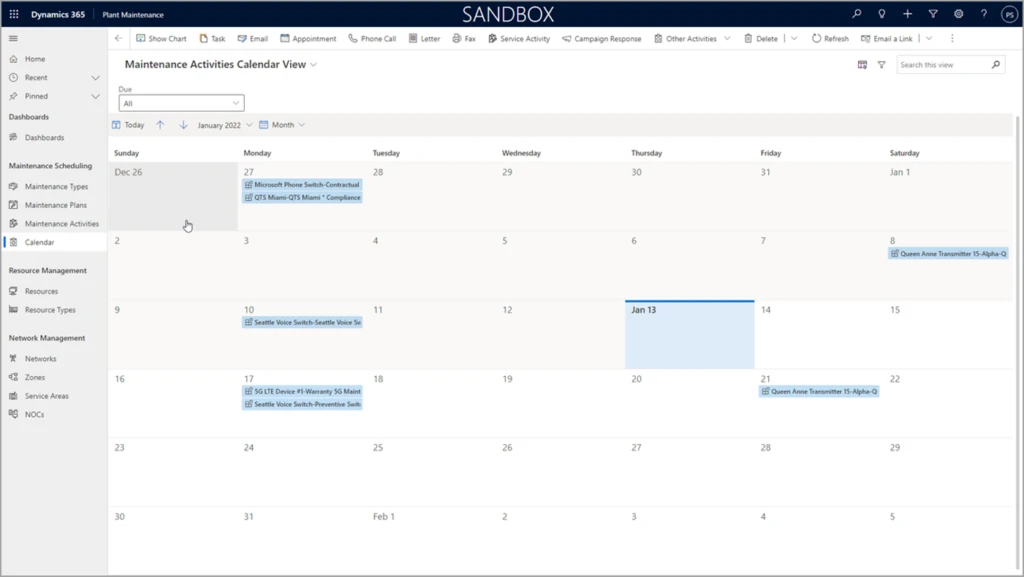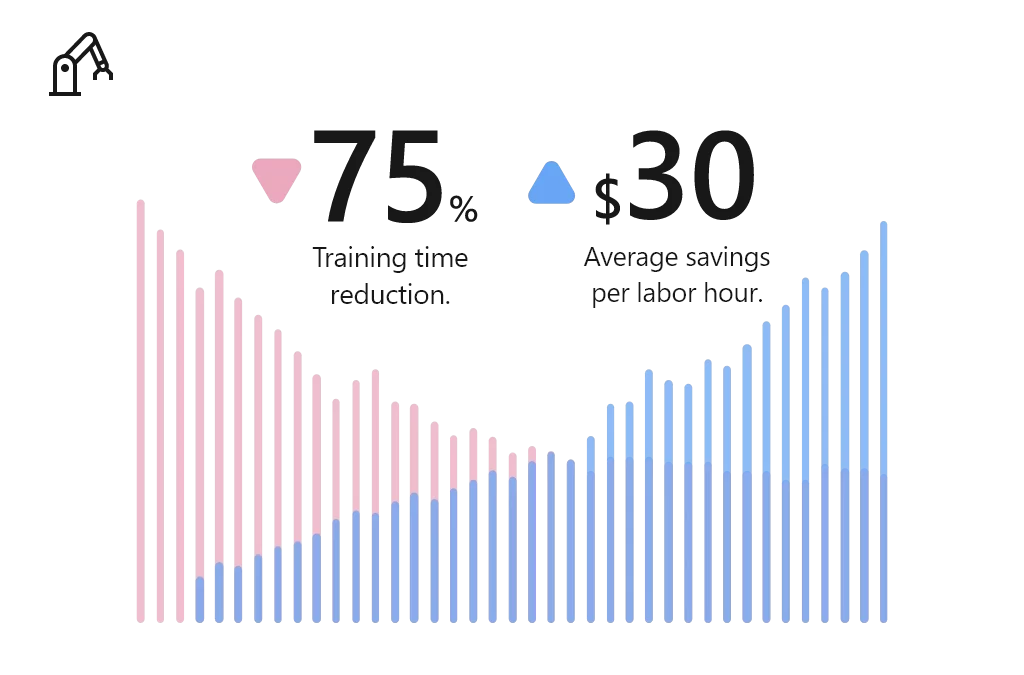
4 key elements to a successful field service transformation
This article is contributed. See the original author and article here.
A successful digital transformation requires weaving together technology, data, process, and operational change. If one of these domains fails to make the grade, your entire transformation may be in jeopardy.
These four domains have one thing in common and that is they rely on people and what they bring to the table. It’s the people that matter mostfrom formulating a vision to crafting the plan and adjusting it on the fly to calculating every detail many times over.
When the stars align and each person on the team contributes to the best of their ability, success is exhilarating. Inter-related domains can be blended into one methodical sea of changeinvigorating not just the transformation team, but enveloping the entire organization with a sense of deep pride. The accomplishment is worn like a badge of honor as every employee is positively touched by the success of the transformation.
And there is no better example than G&J Pepsi-Cola Bottlers’.
G&J Pepsi is the largest family-owned and operated Pepsi franchise bottler, employing more than 1,600 people at 13 locations in Ohio and Kentucky, with production facilities in Lexington and Winchester, Kentucky, and in Columbus and Portsmouth, Ohio.
The key to the success of this 10-time Pepsi corporate customer service award winner is G&J Pepsi’s continuous dedication to innovation. They set out to further elevate service delivery by focusing on account acquisition, customer service, and field service core processes. In short, G&J looked to unlock new and existing revenue opportunities by empowering workers and optimizing operations. As a result, G&J Pepsi is now converting more leads to satisfied customers, delivering even better customer service, and increasing field service technicians’ first-time fix rates.
1. Technology
G&J Pepsi needed a digital thread to connect business functions and leaned on Microsoft Dynamics 365 due to its hassle-free integration, allowing for application portfolio simplification and basically, it just played well to G&J Pepsi’s IT strengths.
One of the biggest new business opportunities for G&J Pepsi was its field service workforce to service beverage and non-beverage equipment beyond its current sales territory. Increasing first-time-fix service would allow G&J Pepsi to expand beyond their current market. Leveraging Dynamics 365 Field Service and Dynamics 365 Sales would remove the boundaries that limited G&J Pepsi.
To realize revenue, frontline workers, including sales and field service needed to unify in the customer journey. G&J Pepsi also knew a huge opportunity existed to accelerate its end-to-end customer process. This included steps such as lead generation, new customer account creation, payment establishment, equipment preparation, installation scheduling, equipment installation, equipment servicing, equipment recovery, and every accompanying process.
2. Data
What was key to creating a unified, optimized customer journey? Centralizing real-time data with a scalable solution.
G&J Pepsi created a Customer Engagement Management (CEM) platform with Dynamics 365 Field Service and Dynamics 365 Sales. The customer is central to everything the company does; however, its processes and supporting technology said otherwise.
Before CEM, a business development representative (BDR) would scan paper and digital notes, in SharePoint, Power BI, and other apps. There was no view into interactions that had taken place with the BDR, field service technician, or customer service rep. There was no single source of truth, no way to transfer knowledge, and no infrastructure for tracking leads. These inefficiencies cost G&J Pepsi $180,000 in revenue per month from lost sales.
Data is now centralized in real-time, up-to-the-minute. Dynamics has streamlined communications and provided complete visibility and in doing so it has empowered G&J Pepsi to focus on new business. Previously, sales, field service, and leadership learned what was happening with customers in indirect, incomplete, time-lagging pathways. Now information is up-to-date and accessible by all who impact customers.
3. Processes
Now that data is up-to-date, processes can be streamlined. The team has mapped out 150 processes and eliminated 200 problems prior to digitizing. How? By working directly with the eventual customers of the systemsales, field service, and frontline workers. One such effort eliminated 170,000 manual touchpoints annually.
As an example, if a delivery team exchanged a piece of equipment mislabeled on a work order, the technician would have to return to the office to receive a corrected work order. Now, the equipment manager can look up the asset on the desktop, correct the mistake, and seconds later the delivery team has the correct information to complete the job.
Technicians are empowered to arrive at the right time (receive operating hours and suggested installation time from the BDR), on the right schedule (schedulers can review the technician’s other work to optimally schedule), the right way (integrated mapping functionality), and with the right equipment (obtained from the work order supplemented with account history.)
From the mobile app, technicians have all their pertinent information at their fingertipsservice tasks, customer details, product needs, and more. The result? Higher first-time-fix rates, opening the door to utilize field technicians’ time and expertise to create new revenue streams.
4. Operational changes
Now G&J Pepsi has automated some routine tasks, unburdening the employee from tedious operational tasks. Completing certain actions within Dynamics 365 triggers a Power Automate flow to kick off another process. For example, a piece of equipment is requested by a BDR for a new customer. Once the BDR puts in the request for equipment for a new customer, the creation of a new work order is triggered, which moves through equipment prep to scheduling a field technician for installation.
The little things that used to cause big delays are now gone. The scheduling team utilizes capabilities to assign best resources to a work order and can now look across service locations instead of only selecting from a smaller subset of available technicians. Field service technicians use the mobile app’s built-in map and routing features to optimize travel time and status flags to indicate if they are on-site or traveling. With minimal development effort, G&J extended the mobile app to provide technicians the ability to generate service reports while at a customer site and instantly email.
Learn more about Dynamics 365 Field Service
The positive results have impacted everyone who touches the customer. Improvements are across a wide range of sales, service, and overall company key measures. G&J Pepsi attributes this success to frontline workers and the team, who have made everyone’s ability to serve the customer exponentially better.
And the commitment to innovation continues. Team members are excited to explore Dynamics 365 Remote Assist’s mixed-reality capabilities to both grow their service business as well as build knowledge across existing and newer agents. G&J Pepsi’s first-time-fix use case explores technician access to real-time virtual visual expertise and the ability to increase on-site resolution.
Read the complete G&J Pepsi-Cola Bottlers’ story.
Read more about Dynamics 365 Field Service.
The post 4 key elements to a successful field service transformation appeared first on Microsoft Dynamics 365 Blog.
Brought to you by Dr. Ware, Microsoft Office 365 Silver Partner, Charleston SC.










Recent Comments